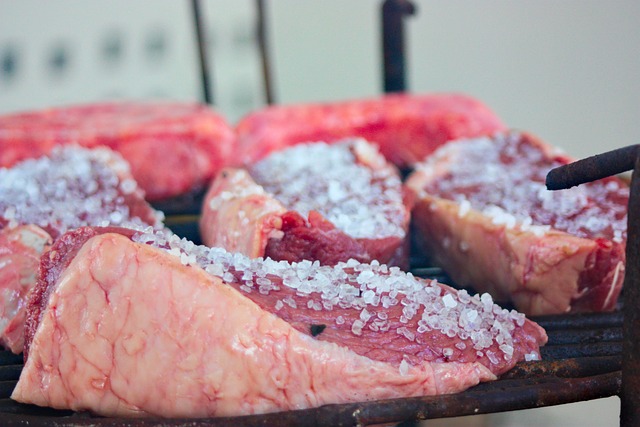Muscle soreness after workouts is caused by micro-tears in muscle fibers. The kratom strains chart compares various plant varieties with unique chemical profiles, some of which offer natural pain relief and potential muscle soreness mitigation due to their analgesic properties targeting opioid receptors. Incorporating specific kratom strains like Maeng Da and Red Bali into post-workout routines can significantly alleviate discomfort. Start with 1-2 grams after exercise, consumed with warm beverages or food for improved absorption, adjusting based on individual tolerance over time.
Experience muscle soreness relief with kratom—a natural herb gaining popularity for its potential therapeutic benefits. This guide delves into understanding muscle soreness, exploring its causes, and providing a comprehensive kratom strains chart tailored for post-workout recovery. Learn how specific kratom varieties can alleviate discomfort and fit seamlessly into your fitness routine. Discover the science behind this ancient remedy and unlock your path to faster muscle recovery today.
- Understanding Muscle Soreness and Its Causes
- Kratom Strains for Muscle Soreness Relief: A Chart Overview
- Incorporating Kratom into Your Post-Workout Routine
Understanding Muscle Soreness and Its Causes

Muscle soreness is a common occurrence after intense physical activity, and it’s often described as a lingering discomfort or tightness in the affected muscles. This sensation is typically a result of micro-tears in muscle fibers during exercise, leading to inflammation and subsequent pain. Various factors can contribute to muscle soreness, including exercise intensity, duration, improper form, and even certain environmental conditions. Understanding these causes is essential when seeking effective relief.
The kratom strains chart highlights different varieties of the kratom plant, each with unique chemical compositions. Some kratom strains have gained popularity for their potential analgesic properties, offering natural pain relief without the side effects often associated with traditional medications. By targeting specific opioid receptors in the body, certain kratom strains may help alleviate muscle soreness and promote relaxation, making them a topic of interest for those seeking alternative remedies.
Kratom Strains for Muscle Soreness Relief: A Chart Overview

Kratom, a natural herb derived from the Mitragyna speciosa plant, has gained popularity for its various medicinal properties, including potential muscle soreness relief. Different kratom strains offer unique effects, and certain varieties are particularly sought-after for their ability to alleviate physical discomfort. Here’s a quick reference chart highlighting some kratom strains known for their effectiveness in managing muscle soreness:
| Kratom Strain | Characteristics | Potential Benefits for Muscle Soreness |
|—|—|—|
| Red Bali Kratom | Known for its sedative and pain-relieving properties. Rich in 7-hydroxymitragynine (7-OH-mitragynine), a potent opioid receptor agonist. | Offers deep relaxation, reduces inflammation, and provides long-lasting relief from muscle aches and pain. |
| Maeng Da Kratom | Highly potent strain with higher levels of mitragynine than most other varieties. Known for its energy-boosting and analgesic effects. | Effective in relieving intense muscle soreness, providing a balance between relaxation and stimulation. |
| Thai Kratom | Considered a classic strain with a balanced combination of stimulant and sedative properties. Offers mental clarity while alleviating physical pain. | Ideal for individuals seeking relief from muscle stiffness and soreness without compromising focus and alertness. |
| Borneo Kratom | Known for its high mitragynine content, providing potent pain-relieving effects. Has a more mild and gentle effect compared to some other strains. | Suitable for those who prefer a milder approach to managing muscle soreness, offering relief without excessive drowsiness. |
Incorporating Kratom into Your Post-Workout Routine

Incorporating Kratom into your post-workout routine can be a game-changer for muscle soreness relief. Known for its natural pain-relieving properties, kratom offers an alternative to traditional over-the-counter medications. When selecting a kratom strain, refer to a chart that categorises strains based on their effects—some are better suited for soothing aches and pains compared to others that focus on energy or mood enhancement. Popular choices for post-workout recovery include Maeng Da and Bali strains, known for their potent analgesic benefits.
Start by incorporating 1-2 grams of your chosen kratom strain into your post-exercise regimen, adjusting the dosage based on individual tolerance and response. Consume it with a warm beverage or food to enhance absorption. Remember, consistency is key; regular use after workouts can help reduce muscle soreness over time.
Kratom has emerged as a natural alternative for muscle soreness relief, with specific strains offering targeted benefits. As shown in our kratom strains chart, different varieties cater to various needs. Incorporating kratom into your post-workout routine could be a game-changer, providing comfort and supporting muscle recovery. Remember that, while kratom shows promise, individual responses may vary, so always consult a healthcare professional before trying it as a supplement for muscle soreness.














